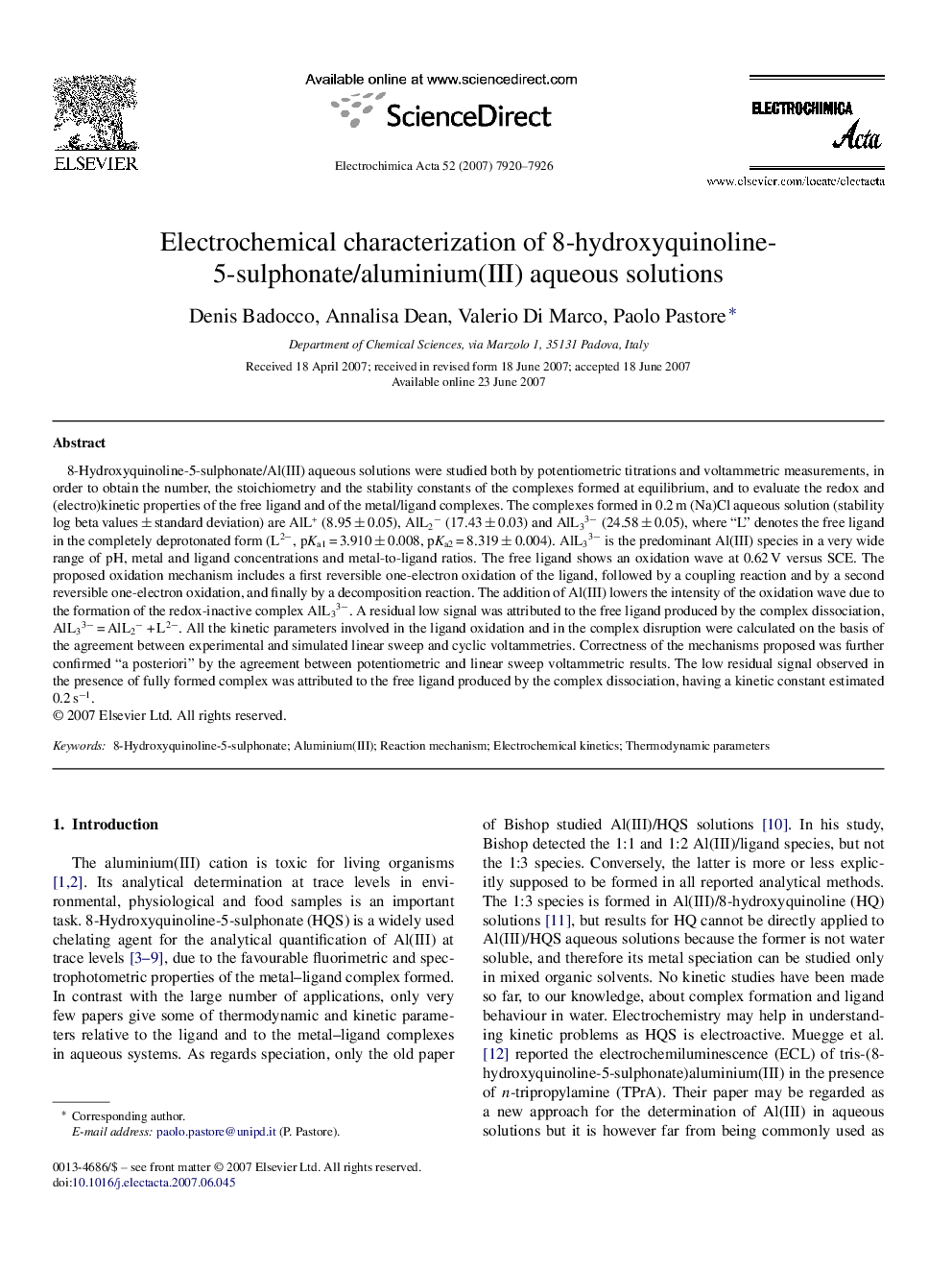| کد مقاله | کد نشریه | سال انتشار | مقاله انگلیسی | نسخه تمام متن |
|---|---|---|---|---|
| 195556 | 459817 | 2007 | 7 صفحه PDF | دانلود رایگان |

8-Hydroxyquinoline-5-sulphonate/Al(III) aqueous solutions were studied both by potentiometric titrations and voltammetric measurements, in order to obtain the number, the stoichiometry and the stability constants of the complexes formed at equilibrium, and to evaluate the redox and (electro)kinetic properties of the free ligand and of the metal/ligand complexes. The complexes formed in 0.2 m (Na)Cl aqueous solution (stability log beta values ± standard deviation) are AlL+ (8.95 ± 0.05), AlL2− (17.43 ± 0.03) and AlL33− (24.58 ± 0.05), where “L” denotes the free ligand in the completely deprotonated form (L2−, pKa1 = 3.910 ± 0.008, pKa2 = 8.319 ± 0.004). AlL33− is the predominant Al(III) species in a very wide range of pH, metal and ligand concentrations and metal-to-ligand ratios. The free ligand shows an oxidation wave at 0.62 V versus SCE. The proposed oxidation mechanism includes a first reversible one-electron oxidation of the ligand, followed by a coupling reaction and by a second reversible one-electron oxidation, and finally by a decomposition reaction. The addition of Al(III) lowers the intensity of the oxidation wave due to the formation of the redox-inactive complex AlL33−. A residual low signal was attributed to the free ligand produced by the complex dissociation, AlL33− = AlL2− + L2−. All the kinetic parameters involved in the ligand oxidation and in the complex disruption were calculated on the basis of the agreement between experimental and simulated linear sweep and cyclic voltammetries. Correctness of the mechanisms proposed was further confirmed “a posteriori” by the agreement between potentiometric and linear sweep voltammetric results. The low residual signal observed in the presence of fully formed complex was attributed to the free ligand produced by the complex dissociation, having a kinetic constant estimated 0.2 s−1.
Journal: Electrochimica Acta - Volume 52, Issue 28, 1 November 2007, Pages 7920–7926